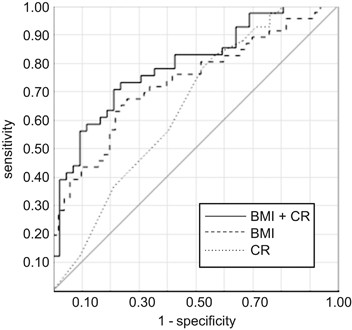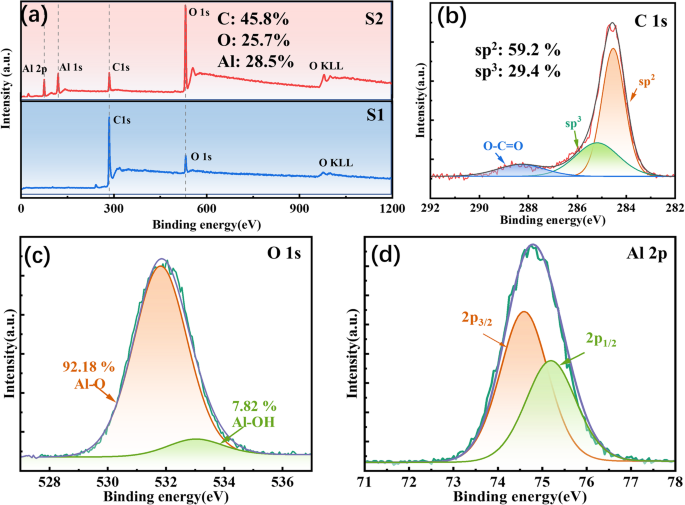
- Select a language for the TTS:
- UK English Female
- UK English Male
- US English Female
- US English Male
- Australian Female
- Australian Male
- Language selected: (auto detect) - EN
Play all audios:
_CHANDIGARH: THE BEAUTIFUL CITY, LOCATED IN THE FOOTHILLS OF SHIVALIK RANGE, WAS ORIGINALLY A CLUSTER OF 58 VILLAGES. WHEN THE SITE WAS CHOSEN TO BUILD A MODERN CAPITAL FOR THE THEN STATE OF
PUNJAB IN 1948, IT RESULTED IN RELOCATION OF 21,000 PEOPLE, MAINLY FARMERS CULTIVATING CROPS SUCH AS WHEAT, CORN, AND MAIZE. THE CITY LIES IN THE INDO-GANGETIC PLAINS, BETWEEN TWO SEASONAL
HILL TORRENTS – THE SUKHNA AND PATIALI RIVERS. PRESUMABLY, BACK THEN IT WAS A MUCH COOLER PLACE. (SOURCE: BRITANNICA)_ “The average minimum temperatures have risen by 0.8 degrees Celsius in
the last three decades,” says the Director, Indian Meteorological Department (IMD) Chandigarh, Surender Paul. The maximum temperatures increased by 0.64 degrees during this time period. The
city’s designer Le Corbusier used modern construction technologies to create a planned and well laid out conglomerate of concrete structures. And this has had its side effects. As per IMD
data, the average minimum temperature in the city has risen by 1.8 degree Celsius over the last seven decades. The temperature rise in Chandigarh has been more than the global average. As
per a continuous study since 1880 by NASA’s Goddard Institute, Earth’s average global temperature has increased by 0.80 degree Celsius during the last 100 years. In India, as per the Centre
for Science and Environment, the annual mean temperature has risen by 1.2 degree Celsius since 1901. While global numbers may rise slowly, locally, rise in temperatures can be faster and
higher due to purely local factors. So what has led to the increase in temperatures in Chandigarh? “Two main factors have led to the more than normal rise in temperatures,” says Paul.
“Firstly, the architecture of Chandigarh makes it primarily a city of concrete and tar. Compared to what it was in the 50’s, the city’s green cover has reduced significantly, giving way to
concrete structures and roads, which act as heat wells and radiate a much larger amount of heat. “Secondly, the city has the highest density of vehicles in the country. This leads to release
of greenhouse gases such as carbon dioxide in the atmosphere, leading to a more pronounced greenhouse impact at a local level.” TWO VEHICLES PER HOUSEHOLD Chandigarh is spread over 140
square kilometers. As per data available from the Forest Department, out of the total area, 41% comprises the green cover which includes Sukhna lake’s 26 sq km. As per the 2018 State of
Environment Report, for a population of over 11 lakhs, Chandigarh has 11 lakh vehicles, which also includes the floating vehicles. THE CITY HAS OVER TWO VEHICLES PER HOUSEHOLD PLUS THE OVER
6000 TAXIS AND 3000 AUTOS PLYING IN THE CITY. THE CHANDIGARH TRANSPORT UNDERTAKING (CTU) HAS A FLEET OF 514 BUSES. OUT OF THESE 361 BUSES COVER LOCAL/ SUBURBAN ROUTES. AS PER CTU FIGURES,
THE PUBLIC BUSES ARE USED BY OVER TWO LAKH COMMUTERS DAILY. HOWEVER, BUSES ARE NOT THE MOST COMMON MODE OF TRAVEL IN THE CITY. RESIDENTS GENERALLY PREFER TO USE THEIR OWN VEHICLES, WHICH
FURTHER ADDS TO POLLUTION AND CONGESTION ON CITY ROADS. As per pollution data recorded by the Central Pollution Control Board, during pre-COVID times, Chandigarh’s Air Quality Index
remained between 200 to 300 on an average in recent years. On an average Particulate Matter (PM 2.5) in the air remained above the permissible limit of 86 micrograms per cubic meter. NO
PUBLIC TRANSPORT SYSTEM Not having any sort of public transport system is one of the chief reasons behind the vehicular congestion and resulting pollution, over which the administration has
little control as of now. “With the increase in population, it is imperative that Chandigarh comes up with a good mass rapid transport system,” says city resident Baljit Kang. “Chandigarh is
a small place, at most a micro-climate zone. We can make a change here with sustainable strategies to check climate change”. “The administration needs to take concrete action,” says Traffic
Adviser Navdeep Asija. “The city has emerged as a transit point for vehicles from Mohali and Panchkula. As per a survey, over 40% of the vehicles plying on the city’s main Madhya Marg road
come from these two adjoining cities. If we could have an alternative connection between these two cities at the periphery of Chandigarh, the traffic congestion within Chandigarh could be
reduced a great deal.” Chandigarh is still to put a Mass Rapid Transit System in place. The Chandigarh Administration had announced a Metro Rail for the city in 2006-07. However, the
project could not be implemented due to lack of clarity on its feasibility. Finally it was ruled out by the city MP Kirron Kher in February 2019. “Metro Rail was never an ideal solution
for the city’s public transport needs,” says Asija. “Just because Metro has been a success in Delhi, it doesn’t mean it will meet the unique needs of a much smaller city like Chandigarh.”
Asija feels Chandigarh needs to adopt a holistic approach. In Delhi, he points out, the Metro has given rise to a Transit Oriented Development of residential complexes, which is not feasible
in Chandigarh because of the planned layout of the city. Owing to the Metro project proposal, the Chandigarh Administration failed to take a look at alternative public transport solutions
all these years. FUTILE EFFORTS AT GREENING Chandigarh’s Director Environment, Debendra Dalai lays emphasis on further increasing the green cover to check climate change. The Chandigarh
Action Plan on Climate Change points out that the Chandigarh Master Plan prepared by Le Corbusier envisaged laying out of a Green Belt around the city to control the city’s spread besides
meeting the daily needs like supply of vegetables, fruits, poultry, milk and milk products. This planned green belt, however, has given way to extensive urbanisation due to bifurcation of
the state. Dr Rajiv Kumar, Assistant Professor, Department of Environment Studies, Punjab University, Chandigarh_,_ attributes the abnormal rise in city temperature to pressures from
upcoming urban areas such as Zirakpur, Mohali and Panchkula, which lie in Chandigarh’s immediate vicinity. “I was born and brought up in Chandigarh and before the 90s, we had a single road
to Ambala, which was surrounded by agricultural land on both sides,” recalls Dr. Rajiv Kumar. “Today, we do not have even an inch of open land for kilometres on end. It has all been
converted into a concrete jungle”. “The concrete structures trap heat causing an urban heat island effect. This leads to more than normal increase in temperature in areas having high
concentration of concrete structures,” says IMD’s Surendra Paul. “On an average, this alone leads to a rise in temperature by 0.4 to 0.5 degree Celsius over the years”. Among other areas
causing an adverse impact on climate, the Action Plan lists dependence of neighbourhood cities on Chandigarh’s infrastructure, disposition of various land uses of the city, inadequate
transportation system, water issues, choking sewage system, and inadequate solid waste management. RECOMMENDATIONS, PLANS AND PROGRESS As a part of Climate Change Strategy, the the city’s
action plan calls for emphasis on popularizing bicycles as a mode of transport, making the city slum free and using the land for further increasing the green cover, reduce vehicular
congestion. Preparing a comprehensive mobility plan, and a traffic and transportation plan has been proposed as a solution to these issues. The Municipal Corporation under the Smart City
project is in the process of implementing a public bike sharing project. The city has 180 kilometers of cycle tracks, but few use it. The project involves setting up 617 cycling docks across
the city with 10 GPS-equipped cycles at each point. “The city has the potential to emerge as the cycling capital of India. We will be aggressively promoting use of bicycles as a means of
mass transport in the coming months,” says K K Yadav Chandigarh Municipal Commissioner and CEO Chandigarh Smart City Limited. The administration is also in the process of setting up a
vehicle-free zone in Sector 17, the city’s commercial district. In an effort to further check air pollution, the authorities are aggressively promoting e-rickshaws with tax exemptions and
sops. The city now has over 3500 e-rickshaws. As per a January policy decision, the administration has stopped registration of auto-rickshaws using diesel, petrol, CNG and LPG as fuel. The
city is also in the process of acquiring 40 electric buses. Officials say that presently the administration is in the process of putting up backend infrastructure, including charging
stations, in place. Asija advocates a multi-pronged approach. “To encourage public transport, the administration needs to discourage private transport. We need to take steps such as
implementing a Bus Rapid Transport System, give tax rebates to shared cars, promote cycling, and subsidize other modes of clean public transport,” he says. For instance, the Chandigarh
Administration could work with the governments of Punjab and Haryana to use the existing railway network around the city to develop a railway corridor and run local trains at regular
intervals for commuters. “Eighty per cent of the track is already there,” points out Asija. “We just need to lay out a 20-kilometre track between Baddi and Kurali to complete the ring. We
need to develop an ecosystem for encouraging public transport where there are multiple modes for the citizens to use as per their needs.”








